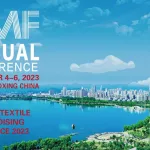
The liberalization, privatization and globalization (LPG), as we know today, was the brainchild of some of the most developed countries aimed at tremendously enhancing their market reach. The advancements in technology as a result of extensive research and development helped them to invent novel new products and services that could have huge potential globally. So, the idea of free market was floated in a way that would sound as a path towards prosperity for most countries around the world – a win-win for all. The market restrictions prevented them to scale up their businesses beyond their borders but slowly, other countries started easing up in the hope of selling their own products also to the developed world at lucrative prices.
Since last couple of years, China’s story is being sold as a success story of LPG. China started welcoming foreign capital in almost all spheres of industrial activity without any restrictions. Most of the advanced countries made huge investments in China mainly because it offered a cheap hard working labourforce and ease of setting up shops there. Chinese coastal areas became the centers of assembling processed products, which were then exported abroad. Jobs in these factories helped workers to fight with the poverty they were facing. Chinese model of opening up to the outside world is a classic example of LPG’s success which motivated other countries to follow the suit. But by then Chinese had already established themselves as a ‘world factory’ and also perhaps as an indispensable global power having the 2nd biggest economy after the United States. China has never looked back after joining the WTO in 2000.
India, on the contrary, started LPG in early 1990s – having missed the earlier bus(es) – at a very slow pace due to baseless political glitches and opposition. There had been some noticeable development but it was not possible to repeat the China’s success story. India seems to be too late to reap the benefits of globalization because it hardly opened up to the extent to become an attractive destination for investment (except in speculative stock market and real estate). Of course, other factors like corruption, bureaucratic delays, work culture etc. also played their roles.
China as the world factory essentially displaced million of workers around the world and disrupted their economic and social lives. Factory workers in America, Europe and elsewhere often blame China for stealing their jobs. There is no doubt that China has benefited enormously from its vast pool of people who are willing to work for a fraction of what their Western counterparts might earn. Despite this, China has been able to lift hundreds of millions of her people out of poverty since 1979.
It would be wrong to blame anyone for the present mess being witnessed in the world trade where each country is trying to blame others for all the ills while protecting own domestic businesses. The major observations in the last 20 years have been that the gap between the rich and poor has widened; rich have become richer while poor more poorer. The unprecedented and fast technological changes have made most of the apparent changes (development, prosperity, higher incomes) either insignificant or worthless. The so-called ‘free-trade’ has never been really ‘free’ in light of so many bilateral and regional agreements. When labourcost rises in one country, businesses flock to next lower labourcost destination as if the labour is the enemy of businesses obstructing their growth. The LPG converted the world into a global village but now this global village has been so congested that it has started breaking up and people living there are looking for more and more space for privacy and peace. It’s time to stop, rethink and rework the whole concept of LPG. We can’t have best of all the worlds and nothing in the world comes ‘free’. So, why expect free trade, global village or world without borders?
G.D. JASUJA
Managing Editor





